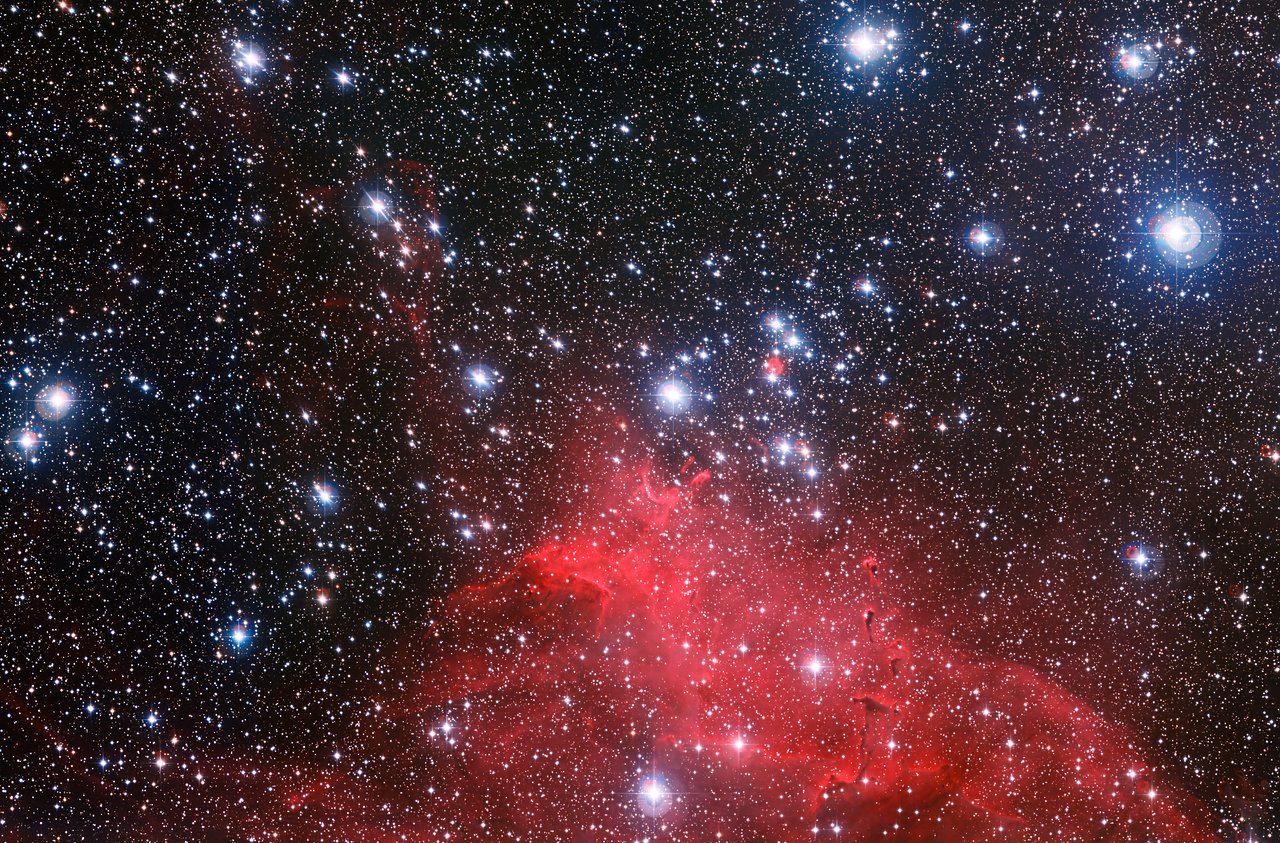Young Stars Paint Spectacular Stellar Landscape

Astronomers at ESO have captured the best image so far of the curious clouds around the star cluster NGC 3572. This new image shows how these clouds of gas and dust have been sculpted into whimsical bubbles, arcs and the odd features known as elephant trunks by the stellar winds flowing from this gathering of hot young stars. The brightest of these cluster stars are much heavier than the Sun and will end their short lives as supernova explosions.
Most stars do not form alone, but with many siblings that are created at about the same time from a single cloud of gas and dust. NGC 3572, in the southern constellation of Carina (The Keel), is one of these clusters. It contains many hot young blue-white stars that shine brightly and generate powerful stellar winds that tend to gradually disperse the remaining gas and dust from their surroundings. The glowing gas clouds and accompanying cluster of stars are the subjects of a new picture from the Wide Field Imager on the MPG/ESO 2.2-metre telescope at ESO’s La Silla Observatory in Chile [1].
In the lower part of the image a big chunk of the molecular cloud that gave birth to these stellar youngsters still can be seen. It has been dramatically affected by the powerful radiation coming from its smoldering offspring. The radiation not only makes it glow with a characteristic hue, but also sculpts the clouds into amazingly convoluted shapes, including bubbles, arcs and the dark columns that astronomers call elephant trunks [2].
A strange feature captured in this image is the tiny ring-like nebula located slightly above the centre of the image. Astronomers still are a little uncertain about the origin of this curious feature. It is probably a dense leftover from the molecular cloud that formed the cluster, perhaps a bubble created around a very bright hot star. But some authors have considered that it may be some kind of oddly shaped planetary nebula — the remnants of a dying star [3].
more
http://www.eso.org/public/news/eso1347/
